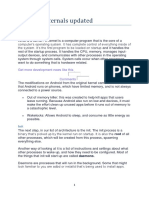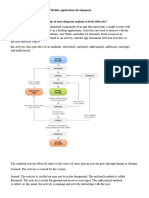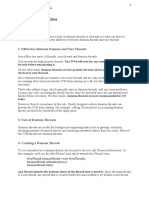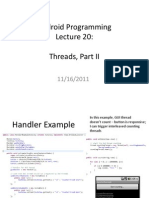0% found this document useful (0 votes)
146 views23 pagesWork Manager in Android: Dawood Ilyas
WorkManager is an Android library that schedules deferrable background work in a reliable way. It is intended for tasks that need to run even if the app exits, like image processing or uploading files. WorkManager uses JobScheduler on API 23+ and AlarmManager + BroadcastReceiver on older APIs to ensure tasks run. It allows scheduling one-off or periodic tasks, adding constraints like network availability, chaining tasks together, and monitoring/managing scheduled work. Key components include Worker classes, WorkRequests, WorkManager, and WorkInfo.
Uploaded by
Dawood IlasCopyright
© © All Rights Reserved
We take content rights seriously. If you suspect this is your content, claim it here.
Available Formats
Download as PPTX, PDF, TXT or read online on Scribd
0% found this document useful (0 votes)
146 views23 pagesWork Manager in Android: Dawood Ilyas
WorkManager is an Android library that schedules deferrable background work in a reliable way. It is intended for tasks that need to run even if the app exits, like image processing or uploading files. WorkManager uses JobScheduler on API 23+ and AlarmManager + BroadcastReceiver on older APIs to ensure tasks run. It allows scheduling one-off or periodic tasks, adding constraints like network availability, chaining tasks together, and monitoring/managing scheduled work. Key components include Worker classes, WorkRequests, WorkManager, and WorkInfo.
Uploaded by
Dawood IlasCopyright
© © All Rights Reserved
We take content rights seriously. If you suspect this is your content, claim it here.
Available Formats
Download as PPTX, PDF, TXT or read online on Scribd
/ 23

























































